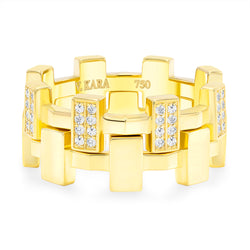On October 19, 2025, the world’s most visited museum—the Louvre Museum in Paris—was hit by a brazen daylight robbery that saw priceless royal jewels vanish in less than ten minutes. What happened was not just a theft of valuables—it was an attack on cultural heritage, national identity, and museum security itself.
The Heist in High-Definition: Timeline & Means

The robbery began at around 9:30 a.m., about 30 minutes after the museum opened.
Four suspects (police believe) used a truck with a basket lift / furniture hoist, parked alongside the Seine-facing façade of the Louvre. They raised the platform to a first-floor balcony in the wing housing the Galerie d’Apollon—where France’s crown jewels are displayed.
They used a disc cutter (or angle grinder) to cut through glass at a window, entered the gallery, smashed two high-security display cases, grabbed the jewels and escaped.
The getaway was executed via motorbikes. The entire operation inside the museum reportedly lasted 4 to 7 minutes—“virtually a four-minute operation” according to officials.
One of the crowns, a crown formerly belonging to Empress Eugénie (wife of Napoleon III)—,was dropped by the thieves during the escape and was recovered, albeit damaged.
What Was Stolen: Royal Jewels & Historical Stakes
The Ministry of Culture and prosecutors confirmed that eight objects of “inestimable heritage value” were stolen.
Among the pieces:
A sapphire tiara, necklace and earring set belonging to Queen Marie‑Amélie and Queen Hortense.
 An emerald necklace and paired emerald earrings from the set of Empress Marie‑Louise (wife of Napoleon I).
An emerald necklace and paired emerald earrings from the set of Empress Marie‑Louise (wife of Napoleon I).
 A large bow-brooch (“corsage bow”), a tiara of Empress Eugénie, and the crown mentioned above (recovered damaged).
A large bow-brooch (“corsage bow”), a tiara of Empress Eugénie, and the crown mentioned above (recovered damaged).
 The value? Prosecutors estimate €88 million (≈US$102 million) — and that number doesn’t capture the historical and cultural value.
The value? Prosecutors estimate €88 million (≈US$102 million) — and that number doesn’t capture the historical and cultural value.

The Implications: Heritage, Security & Recovery
Heritage & Cultural Loss
These jewels weren’t simply valuable gemstones—they were tangible links to the French monarchy and empire. As one French prosecutor put it: “the economic damage is significant, but it is nothing compared to the historical damage.”
Security Failures & Institutional Vulnerability

Officials acknowledged that at least part of the façade used by the thieves lacked proper camera coverage. Staff unions had warned about under-staffing and rising visitor numbers placing strain on security. A master jeweler pointed out that the thieves may melt down or recut the gems, reducing their value dramatically and making them nearly impossible to trace.
The Challenge of Recovery
Experts believe there is a 24 to 48-hour window to catch the thieves and recover the jewels before the gems are altered beyond recognition. Once the gems are recut, melted or re-mounted, tracking them becomes extremely difficult—even with fingerprints, CCTV and police investigation.
Investigations & Official Response

The case is being investigated under the title of “theft by an organised gang and criminal conspiracy”, led by the Brigade de Répression du Banditisme (BRB) and the Paris public prosecutor. The museum’s director, Laurence des Cars, acknowledged “terrible failure” in security and offered her resignation, though it was not accepted. The French President, Emmanuel Macron, condemned the theft as an “attack on a heritage that we cherish because it is our history.”
The museum reopened to the public a few days later, though the Galerie d’Apollon remains closed for forensic and security review.
Why This Heist Matters—And What It Signals
This event is a wake-up call: even the most prestigious cultural institution can be vulnerable. It raises critical questions: How can heritage treasures be protected in the digital and highly visible age? What role should staffing, surveillance, building maintenance and preventive investment play? For art historians, security professionals, journalists and heritage advocates, this is a case study in risk, reward and the fragility of cultural legacy.
The jewels stolen from the Louvre weren’t just gemstones—they were bearers of stories: empires, monarchies, artistry, power. In a matter of minutes, a team of thieves undercut centuries of heritage and plunged France—and the art world—into reflection.
Whether the jewels will ever be seen again remains in doubt. What is certain is that a piece of global cultural memory has been silenced, and the Louvre heist stands as one of the most audacious daylight museum thefts in history.



Leave a comment